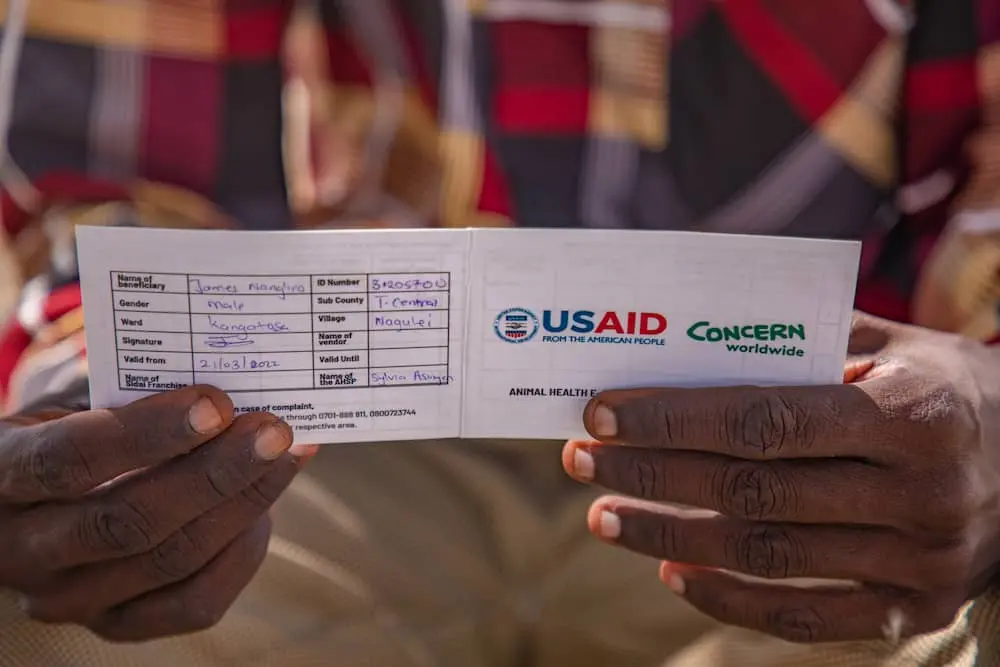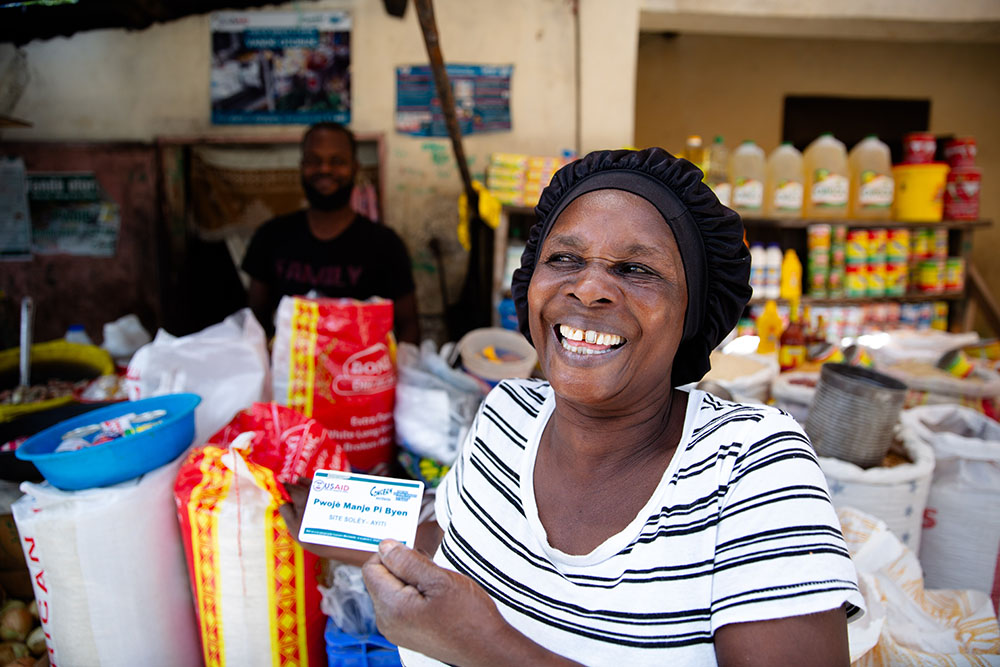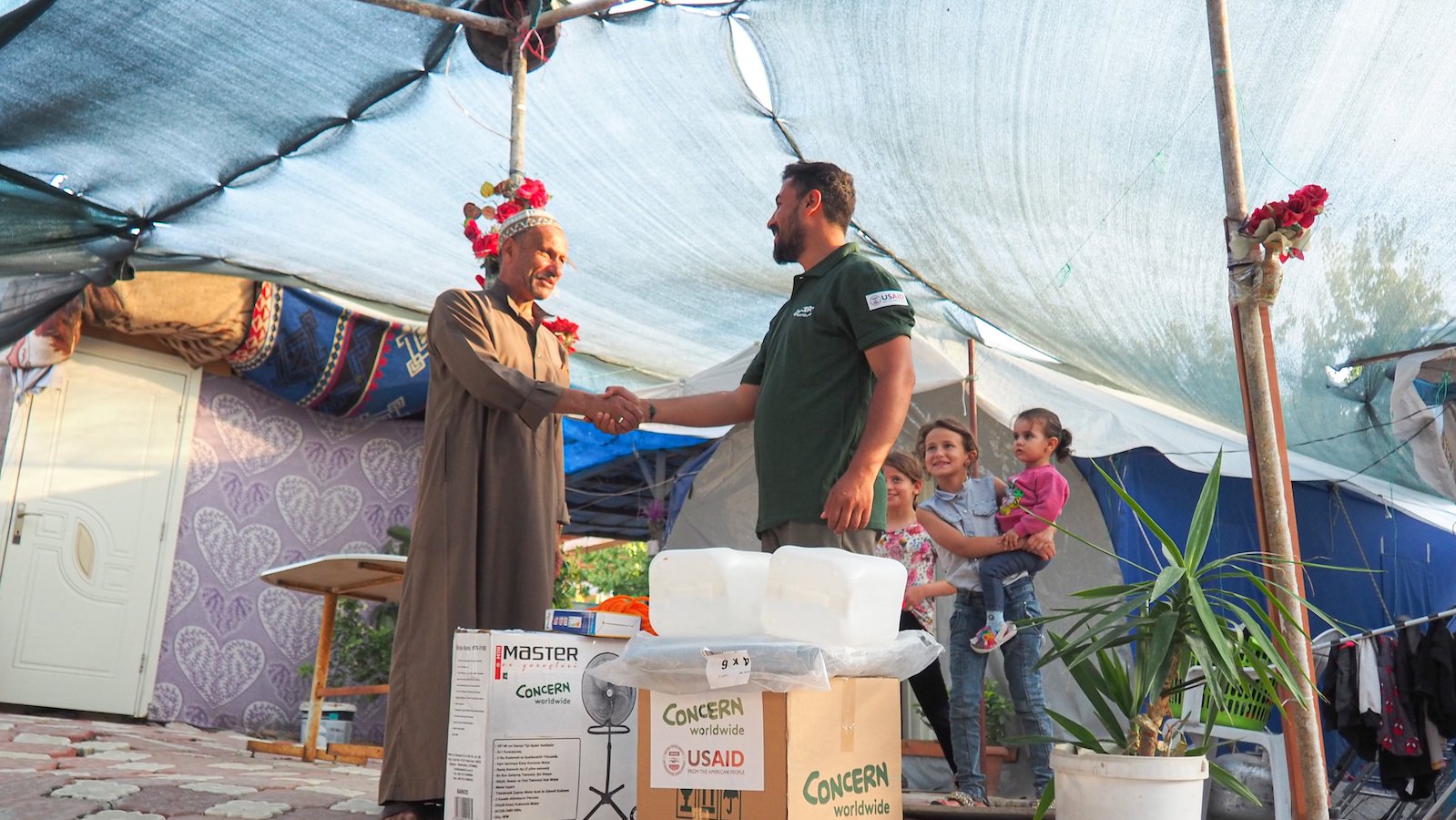Foreign aid takes up a larger percentage of news and debates than it does of the federal budget — especially in an election year. Here’s what you need to know.
Foreign aid takes up a tiny fraction of the US national budget, but occupies a much larger percentage of news and debates.
It’s easy to get lost in the details and the numbers, but on the other side of this topic are millions of lives that depend on foreign assistance. And, contrary to what some public figures argue, the US also benefits immensely from its program. Here are the key foreign aid myths — and facts — that you should know, especially in an election year.
Myth: Foreign aid is a waste of money and doesn’t work
Let's get the big one out of the way first: Foreign aid is wasteful, it doesn’t work, or it could be better put towards solving some of the problems we have here at home.
There are many variations on this argument, but all of them are just plain wrong. In recent decades, the world has seen incredible improvements in areas of public health, universal education, and economic well-being — even despite the losses that have accrued since the COVID-19 pandemic.
Between 2000 and 2014, US foreign aid spending saved the lives of 3.3 million children.
We’ve made tremendous strides towards eradicating malaria, polio, tuberculosis, and other deadly — but preventable — diseases. Millions of people have improved their living situation, as well as their communities, through increased access to education, better harvests in the face of climate change, micro-financing, and other sustainable solutions to poverty. Many of these gains are, in large part, thanks to foreign aid. Since 2008, USAID's efforts in 25 countries have helped save the lives of 4.6 million children (among many other results).
Fact: Foreign aid makes us money
Low- and middle-income countries represent some of the fastest growing markets in the world. A 2015 PricewaterhouseCoopers report projects that, by 2050, the countries with the fastest-growing economies by rate of economic growth will be Nigeria (5.4%), Vietnam (5.3%), Bangladesh (5.1%), India (4.9%), Philippines (4.5%), Indonesia (4.3%), and Pakistan (4.3%). More recent data have shown that, year over year, African countries continue to dominate the world’s top-growing economies. Many of these countries are also ongoing recipients of US foreign assistance.
Ultimately, we should be supporting these programs because it’s an inherent value for the American people. However, we can also look at the economic benefits that the US gains from its foreign aid spending: The majority of consumers of US goods and services live outside of the US. Helping to improve local economies means that we are expanding our own market, and historical evidence has shown this to be the case with countries like Brazil, Mexico, and South Korea giving us significant returns on our investments.
In 2022, our exports to South Korea totaled $72.1 billion, an increase of 9.5% compared to 2021. In that same year, our exports to Brazil earned us $49.4 billion, and Mexico was our second-largest trading partner (including exports of $324.4 billion). It’s highly unlikely that we would have these economic gains had we not previously supported these countries with foreign assistance.


Myth: Cutting foreign aid will balance the US federal budget
No, we don’t spend too much money on foreign aid. But you’d be forgiven for thinking otherwise. Past reporting has shown that Americans think we spend about a quarter of the national budget on foreign aid. In reality, it’s a drop in the budgetary bucket.
Foreign aid spending accounts for just over 1% of the federal budget.
On average, foreign aid spending accounts for just over 1% of the federal budget each year. Last year, it was just 1.02%, with $63 billion spent on assistance out of a $6.13 trillion budget. If we divided that spending among every American, it would average out to $188 per person for the year. That may seem like a lot, but consider that the average American also spends twice that amount on cigarettes and tobacco products (in previous years, we’ve even seen Americans spend more on candy).
Fact: Foreign aid also saves us money (and lives)
In addition to giving the US economy a return on investment, foreign aid saves America money — and lives. For every $1 spent on foreign aid initiatives geared towards conflict prevention, we save $16 in response costs; not to mention the countless lives of US military personnel who don’t need to be sent into war zones.
This is one of the reasons that foreign aid enjoys an overall bipartisan support in Congress. Small investments that enhance stability, self-sufficiency, and good governance around the world lessen the chances of costly US military interventions down the road. In fact, military leaders are among the strongest advocates for non-military investments. Former Secretary of Defense James Mattis even once told Congress: “If you don’t fund the State Department fully [i.e., the department that supports foreign assistance], then I need to buy more ammunition.”

Myth: Foreign aid is a blank check for corrupt governments
Foreign assistance isn’t a blank check for foreign governments to use however they want. In fact, most of the foreign aid budget doesn’t even go directly to governments. Over three-fourths of it is allocated (via US-based agencies, like USAID) to a mix of nonprofits (like Concern) for key activities that directly benefit those most affected by crisis and emergency.
True, some foreign assistance funds go directly to foreign governments, but this — like all of the foreign aid budget — is earmarked for defined projects and sectors. For instance, USAID recently issued a payment to the Government of Pakistan, but it was to specifically fund an education program in Sindh province. Like any other recipient, the government will also have to prove how that money was spent and demonstrate the benefits it created.
Fact: Foreign aid is some of the most scrutinized spending in the US budget
Foreign assistance spending is some of the most scrutinized spending in the federal government: The two top-ranked agencies in the Federal Invest in What Works Index are USAID and the Millennium Challenge Corporation (MCC).
What’s more, aid is a powerful bargaining chip for the United States. Organizations like USAID and MCC, keep close tabs on what is done with the money they deliver — and how effective that spending is. Agencies will also often negotiate aid contracts with governments in order to offset corruption or create systemic change to support improved social services and protections.



